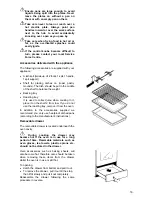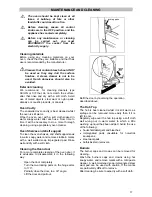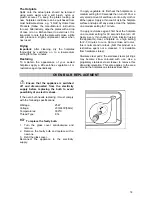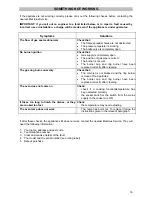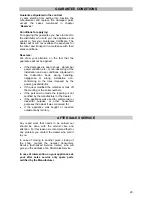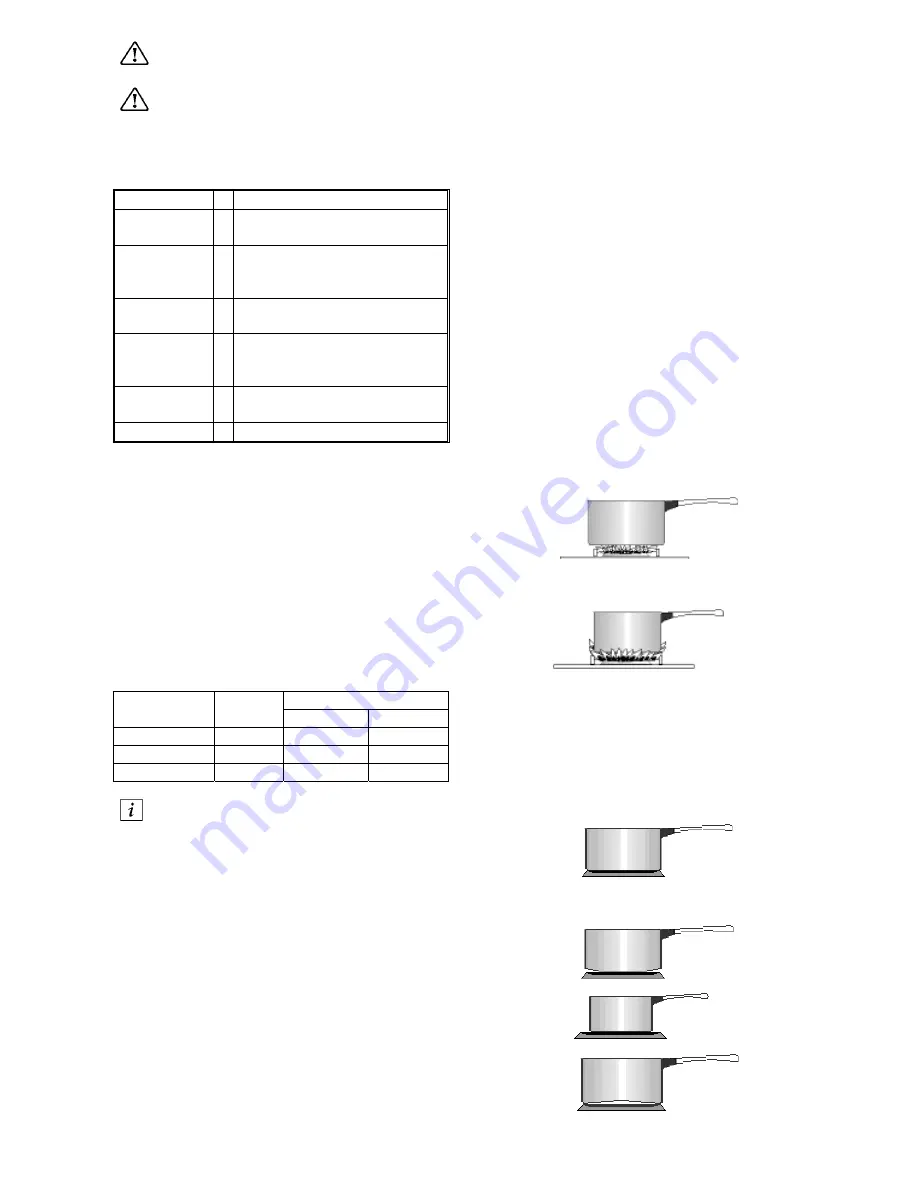
15
Before closing the lid ensure the control
knobs are off.
Do not put anything on the hob that is
liable to melt.
Suggestions for the correct setting of the plate
are given in the following table:
OFF
0
Very Gentle
1
To keep food warm
To melt butter and chocolate
Gentle
2
To prepare cream-sauces,
stews and milk puddings or to
fry eggs
Slow
3
Dried vegetables, frozen food,
fruit, boiling water or milk
Medium
4
Boiled potatoes, fresh
vegetables, pâtés, soups,
broths, pancakes or fish
High
5
Larger stews, meat roll, fish,
omelettes, steaks
Fast
6
Steaks, escalopes and frying
Selecting the Correct burner
Above every knob there is a symbol for the
corresponding burner. For good cooking results,
always choose pans, which correctly fit to the
diameter of the burner used (see figs).
Choose thick, flat bottom pots.
We recommend the flame is lowered as soon as
the liquid starts boiling. For a correct ignition
always keep the burner ring and the spark plugs
clean.
The following diameter pans can be used:
Good use
Bad use
(Power waste)
Diameter (mm)
Burner
Power
(kW)
min.
max.
Rapid
3,00
160
280
Semi-Rapid
2,00
140
240
Auxiliary
1,00
120
180
Hints and Tips
Saucepans for use on solid hotplates should have
several characteristics:
•
They should be fairty heavy duty.
•
They should fit the heat area exactly, or be
slightly larger for efficient use, NEVER smaller.
•
They should have a flat base to ensure good
contact with the hotplate. This is particularty
important when using pans for high
temperature frying presure cooking.
As soon as liquid starts boiling, turn the hotplate
control knob so that it will barely keep the liquid
simmering.
You can switch off the hotplate a short while
before you finish cooking, and the final stage will
be completed using the accumulated heat.
Good use
Bad use
















